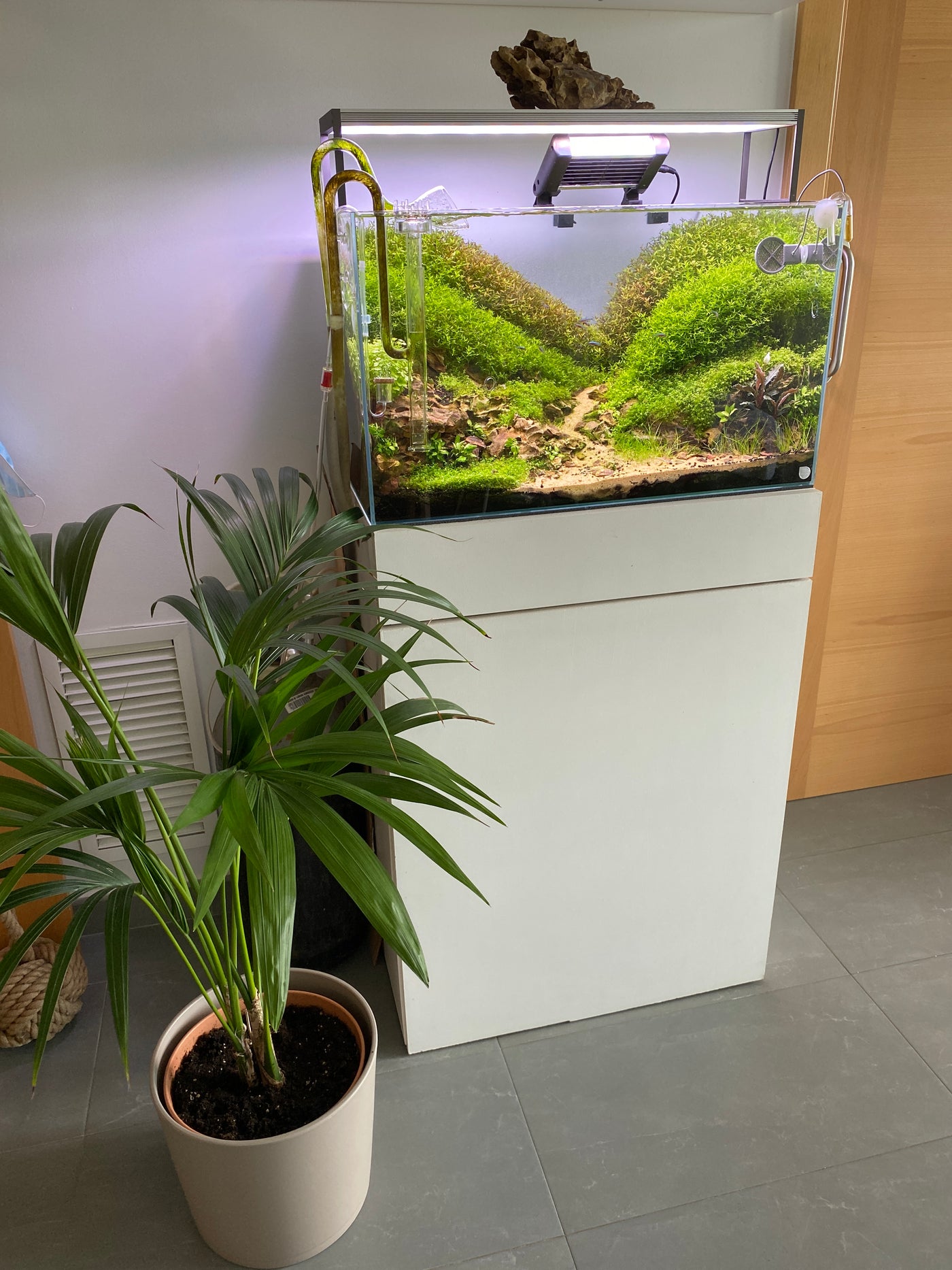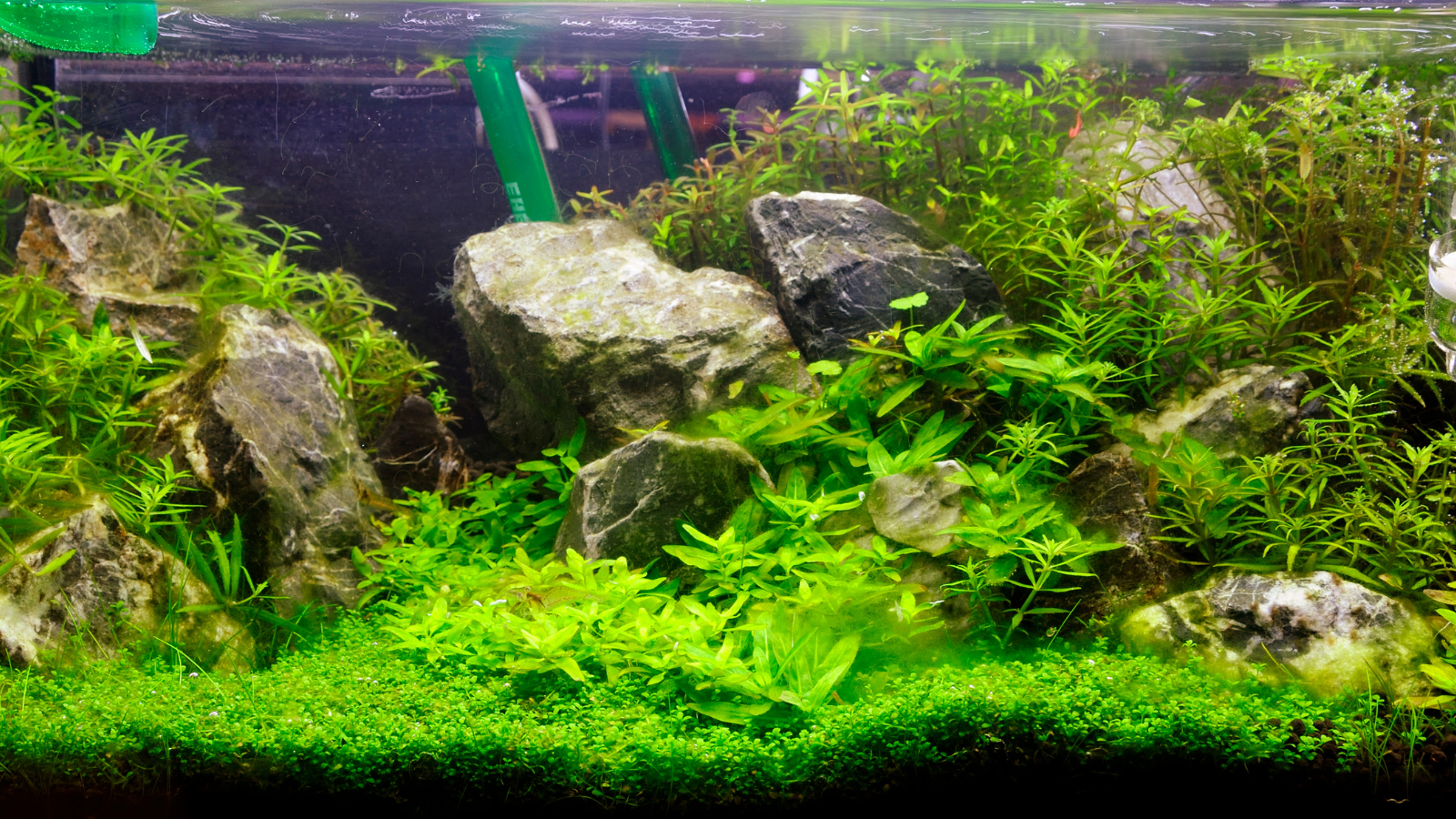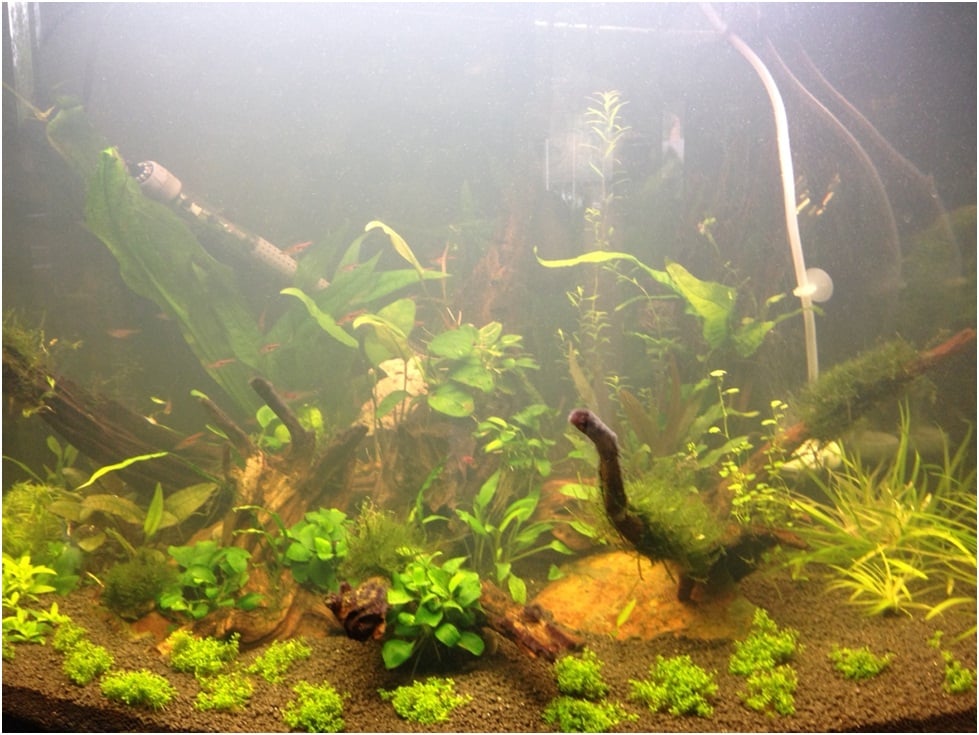
It may sound like an obvious question but aquascaping means different things to different people. Do you aquascape purely just to create underwater balance with your livestock or is your aim to create contrast in your aquariums? Read on and discover why the aquascaping hobby has become so important to people of all hobby backgrounds.

First of all, what is aquascaping?
The obsession known as aquascaping is the term applied to the process of creating underwater displays by using natural materials like wood, plants and rocks. Although more popular among planted tank enthusiasts, the term aquascaping also refers to the saltwater aquarium side of the community too.
Most aquariums require an aquascape on some level and while our priority should remain the well-being of our fish, shrimp or even corals (if you have a reef aquarium), there is nothing to stop us from getting creative and with a little inspiration from nature itself, we can create focal points, shape and still have enough room for our livestock to have a healthy and natural-looking home.
Let us dive into the main focus areas of this wonderful addiction. Which area do you relate to the most?
We all remember our first aquascape.
Everybody starts somewhere, nobody is an instant expert. For most of us, our first aquascape is the most challenging one. It is during this first scape that we learn the basics like finding the right balance between lighting, CO2 and nutrients. There is a saying that resonates very well with the aquascaping community which is "every day is a school day". Aquascaping demands we learn from experience, but also from other aquascapers. When someone starts out, they may have a little knowledge but by sharing with others, it doesn't take long to fall in love with the world of aquatic plants.
For many aquascaper, the continued learning and new challenges are what drive their creativity, keeping them obsessed with the world of aquarium plants. When we first begin to experiment with live aquarium plants, it can feel very overwhelming and a little bit like trial and error, but after some time, we learn the different characteristics of each species and before long, we are enjoying healthy plant growth and thoughts of a new tank begin to creep in.
Multiple tank syndrome
While some of us will enjoy maintaining a single aquarium for a long time, there are many of us who simply cannot contain our love of aquascaping to a single aquarium. This is known as "multiple tank syndrome" and is fairly common now that there are so many smaller tanks on the market. There are just so many plants, rocks and wood out there that it is too tempting for us not to keep setting up new aquariums.
What's the fascination?
Aquariums have been installed in people's homes for many years now and have been used as a focal point in a variety of settings. It does not matter if you set up a reef tank filled with live rock and spa corals or install larger aquariums filled with plants, plant or coral placement, live rock, small rocks, larger rocks or wood layouts, each is an example of 'aquascaping' and provide the fish keeper with an experience.
As people, we all have different likes and preferences so it is no surprise that as fishkeepers or aquarists, we all have different ideas and methods of enjoying planted aquariums. There are a variety of niche interests associated with aquascaping that many people find they are drawn to in particular.
-
Aquarium water - Any fishkeeper must consider themselves 'water keepers before becoming a fishkeeper. First identifying the correct water parameters and then maintaining the water quality is almost an art form in its own right and plays a crucial role in the success of the aquarium. Water flow, temperature and sometimes even the amount of empty space available in the water column are very important.
-
Filtration - Another element of this obsession that can also relate to general fishkeeping. When related to aquascaping filtration is an interesting subject. The choice of filter media is important. To use activated carbon or not (see this blog and form your own opinion. here). We have biological filtration, mechanical filtration and not to forget, no filtration (learn about these specialist aquariums here). Ultimately the aim is to have a nice clear water column and no dead spots. This subject is popular among many aquascapers. If you ask for aquascaping tips I'm sure that the subject of filtration will
-
Hardscape - This is an area of the hobby that personally fascinates me. As a child, and I'm sure many of you can relate to this, I collected stones and rocks that I found interesting. As an aquascaper, this allows me to indulge this fascination of mine in the search for interesting rocks to use in new layouts. Whether we plan rock islands with Anubias creeping out the crevises or a simple rock pile to create height for specific designs, your choice of rocks is important.

Rocks can be used to create open space by holding back certain plants and much more. Rocks are the skeleton of all aquascapes and as such, many aquascapes find they spend more time selecting rocks than anything else.
In the saltwater aquarium side of the hobby, rocks are even more important. The choice to use dry rock or live rock can be a difficult one. Depending on how much thought is going into the aquascape, dry rock may be better. Being able to create ledges and towers with perfect spots for coral placement and even creating small plugs for coral frags is easier when using dry rocks. -
Lighting - Aquarium light is one of the subjects that, over the years has become less of a science and more of a pleasure to indulge in. There was a time when achieving the best light for your plants would require calculating all kinds of different light readings. Luckily, the modern aquascaper can benefit from LED light units with preprogrammed light settings, timers and a multitude of aesthetically appealing designs. That being said, when it comes to reef tanks, good lighting has many benefits. Providing the correct light is vital for a successful reef tank especially when SPS corals require specific lights to grow correctly.
Aquascapers can access light units that have preset options for specific plant species. Each set is designed to bring the best colour and growth rate with minimum input from the aquascaper. -
Plants - Last but by no means least, aquatic plants. Today aquascapers have a wide range of species to choose from. Do you like to use an established plant for an instant aquascape display or do you prefer to use in-vitro plants and allow them to grow into your aquascape over time? With so many different colours, textures and sizes of plants out there, it's no surprise to find aquascapes really fascinated by them. After all, plants are the biggest part of aquascaping.
Why do you aquascape?
So after reading all the different areas and potential obsessions within the aquascaping hobby, where does your heart belong? We would love to know what it is that draws you towards creating underwater gardens or in a saltwater aquariums case, the perfect reef?


